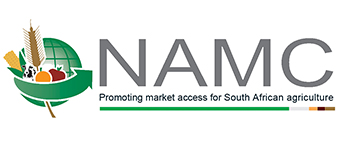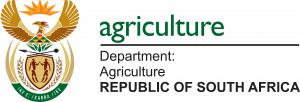CEO’s Desk – September 2020

The month of September in South Africa ushers in Spring, a season of new beginnings. As a public entity, the NAMC is embarking on an exercise to plan ahead for the next financial year. It is an opportunity for self-reflection and for making adjustments to our business operations. We have agreed that whatever we do our work should be guided strictly by our founding legislation the Marketing of Agricultural Products (MAP) Act of 1996. The MAP Act assigns to the NAMC an advisory role to the shareholder Minister and, by extension, other directly affected groups. The broad areas of advice, which also happen to be the objectives of the MAP Act, relate to market access, efficiency of the marketing of agricultural products, the viability of the sector as well as the optimisation of export earnings. The NAMC’s core divisions are structured to cover the generation of strategic advice in these four broad areas. A revised draft five-year Strategy and Annual Performance Plan (APP) will be finalised by the end of October and finally approved for submission to Parliament at the end of January 2021.
While we plan ahead, we are also making note of a number of encouraging highlights in the sector as well as achievements by the NAMC during the month of September. While Statistics South Africa released its quarterly report showing the largest quarterly decline in the country’s GDP at 51% fall for the second quarter of 2020 fuelled by COVID-19 pandemic, interestingly, only agriculture emerged with a positive growth rate. The positive agriculture showing demonstrates, among other things, the value of regulatory interventions in insulating economic sectors against external shocks. Agriculture is now better positioned to lead the post-COVID-19 economic recovery and growth expedition. However, its true potential depends on the sector players’ ability to address structural faults that exists. The NAMC through its Markets and Research Centre (MERC) continues to assess and provide marketing and policy advice on issues that impact growth in the sectors.
Back in 2006, the NAMC recommended that at least 30% of volumes traded in the National Fresh Produce Markets (NFPMs) must be handled by black market agents to promote inclusivity in the fresh produce value chain. In assessing progress on this key marketing intervention, the latest data from selected NFPMs indicates that most NFPMs have not attained this target with the exception of the Joburg Market. Over and above providing research that contributes towards viable domestic food markets, the NAMC produces research that identifies key export markets for export-oriented products such as citrus, grapes and wine. This research is then used by policymakers to negotiate new exports opportunities for South African producers. In August, the Department of Agriculture, Land Reform and Rural Development (DALRRD) announced that it has successfully negotiated an opening of Philippines markets for the exportation of citrus products. The work done over the last decade by the National Plant Protection Organisation of South Africa (NPPOZA) and industry is lauded. NPPOZA comprises the Department of Agriculture, Land Reform and Rural Development (DALRRD)’s Plant Health, Inspection Services and Food Import and Export Directorates, as well as representatives from the Department of International Relations and Cooperation (DIRCO).
Research that identifies market opportunities is just one of the outputs produced by the NAMC’s MERC. Pricing mechanisms that tends to disadvantage farmers in the value chain is another area that is closely monitored by the NAMC through its farm to retail price spread research. The latest report of farm-to-retail price spread by the NAMC showed that the gap between a farm price and retail price has been steadily growing over the past 18 years. In August 2020, the farm value, that is a share of what a farmer receives from a price paid by a customer in the supermarket, for whole-chicken, was 35.9%, for maizemeal was 55.6% and for brown bread was 18.6%. The rising gap between farm price and retail price is squeezing farmer profits and also exacerbating higher food prices. In the month of August, the NAMC through its food basket report showed that consumers are increasingly unable to access and afford basic food, with a typical food basket now costing R957.45 per month which is way higher than the child grant and food-poverty line set at R840 for 2020 by StatsSA.
The NAMC’s Transformation Review Committee (TRC) has recently resumed its physical monitoring and evaluation of transformation projects funded by the 20% portion of statutory levies. The TRC was recently invited by Milk SA to conduct site visits to the dairy industry transformation projects in the Free State, KwaZulu-Natal and Eastern Cape Province between 7 and 11 September 2020. The purpose of the visit, was to conduct a Monitoring and Evaluation (M&E) process on the progress of the transformation projects funded through the 20% budget from Milk SA’s annual statutory levy income. A total of fifteen (15) dairy projects were visited and there are many positives in the relationship between Milk South Africa and the beneficiaries of its transformation levy. All the farmers visited had appreciated the assistance from the Milk SA and outlined the following:
- They have access to markets for their produce,
- Infrastructure support ranging from upgrading of milking parlours, feed mixers and installation electricity;
- Support with fodder flow and support by Milk SA for private vets; and
- The flexibility to purchase farm inputs in ensuring the success of their ventures.
The Milk SA transformation funding model is proving to be a success by “Promoting of Sustainable Commercialization of Existing Black Dairy Farmers” in collaboration with other stakeholders within the dairy industry value chains such as marketers and the Local government Departments. The issues of infrastructure, equipment, fodder and pasture management still needs more collaboratively supported amongst black entrepreneurs within the dairy industry.
The NAMC is currently investigating an application for the amendment and continuation of statutory levies in the citrus industry. At this stage the citrus industry is the fourth biggest collector of statutory levies in South Africa with approximately R92 million per year. The wine industry is the biggest with R106 million per year. If the Minister approved the proposed continuation, the citrus industry will become the biggest collector of statutory levies in South Africa (on average approximately R251 per year). The citrus levy is only applicable on the exported product. Although the proposed new levy represents a 120% increase compared to the levy ending in 2020, the proposed statutory levy will be on average 1.19% of the guideline price of citrus fruit to be exported and therefore well below the maximum of 5% as prescribed by the MAP Act. Since 2001 citrus exports have grown at an average annual rate of 6%. Approximately 65% of the proposed levy will be allocated towards research conducted to gain new international markets and maintain existing markets. The citrus industry regards the increase as an investment into ensuring the long-term profitability and competitiveness of the industry. Statutory levies be approved by the Minister for a four year period and, as indicated, the citrus industry will collect more than R1 billion over the next
More interestingly, the citrus industry sets to generate about R1 billion from statutory levies in the next four years. The implication of an increase in the statutory levies collection means that about R200 million is envisaged to be spent on transformation interventions in the citrus industry during the relevant period. The envisaged impact is likely to be seen on interventions relating to enterprise development, skills development, management control and ownership, as well as the socio-economic development such as employment creation, income generation and narrowing the inequality gap that exists in the citrus industry. Furthermore, an intervention of this nature has high chances to impact on the contribution to the GDP and revive the south African economy which is currently under pressure.
The NAMC TRC continues to review industries transformation business plans as submitted by industries. On 9 September, the TRC has approved the Raisins Industry transformation business plan for the continuation of statutory measures for a period 2021 to 2024. Moreover, the attendance of the industries transformation review committee meetings is done on a regular basis.
In terms of work with the Food, Agriculture and Natural Resources Policy Analysis Network (FANRPAN), which seeks to contribute towards a viable sector, the NAMC is involved in the Food Systems Research Networks for Africa (FSNet-Africa) project, which is a new two-year project, aimed at strengthening food systems research capabilities and translating them into evidence-based policy solutions and practical interventions in support of the Sustainable Development Goals (SDG) targets for Africa. The project is a collaboration between the three lead partners: The University of Pretoria (UP), the University of Leeds (UoL) and FANRPAN) The lead partners will work closely with the node institutions in the six countries, namely Ghana, Kenya, South Africa, Malawi, Tanzania and Zambia, to ensure that the mandate of the project is fulfilled. The project will give opportunities to 30 early career research fellows from the six countries to do systems analysis research on climate-smart, nutrition-sensitive and poverty-reducing food systems. In the case of South Africa, the NAMC will work closely with the lead partners in implementing the project.
As part of enhancing market access especially for new entrants, and as reported in the August 2020 article, the NAMC through the National Red Meat Development Programme (NRMDP) has successfully negotiated an export market for cattle for communal and emerging farmers. The next batch of cattle geared for the Mauritius export market will move in the month of October. In preparation for the summer auctions, the NRMDP is getting 929 cattle and 256 sheep ready in its custom feeding facilities in Eastern Cape, KwaZulu-Natal and North West provinces. During September, the NAMC identified opportunities in two commodities (Vegetables and Rabbit) and will design development models to integrate new entrants into the mainstream markets. Virtual Stakeholder engagements were facilitated and concept document reports were produced to inform the design of these market access models.
A diagnostic analysis was also conducted pertaining to 21 hydroponics farmers from the Moqhaka municipality in the Fezile Dabi District, Free State Province. The farmers are already farming with various vegetables on open fields and hydroponics. The purpose of the diagnostic analysis was to identify their technical challenges in order to design a Technical Support Plan to address those challenges. These farmers are producing at a small scale and they also don’t have access to markets and credit from financial institutions.
The process of compilation of the Agriculture and Agroprocessing Master Plan (AAMP) under the coordination of the NAMC is in progress. Its success will depend on a full commitment and collaboration from all the stakeholders. While there is progress in this process, we also need to confront some of the realities of a sector that is not yet fully unified due to entrenched differences among the role players. The management of these differences requires sensitivity and focus towards a common goal namely, achievement of a sector that is growing in an inclusive manner. The alternative is not desirable namely, preoccupation with areas of divergence at the expense of progress and convergence.

